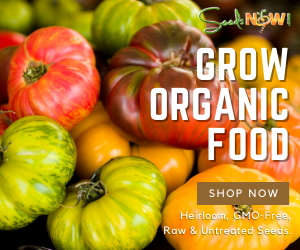Farm and Garden
umus, the partially decayed organic material, is the most valuable single constituent of the soil, and the one element that every farmer tries to conserve and to increase. It helps to keep the soil loose and friable, improving its drainage, gives it breathing space, makes it warmer than it would be otherwise, helps to hold water in a form more suitable for crops, and renders more valuable the store of plant food which every cultivated soil contains.
Don’t seed alfalfa in a field that’s full of quackgrass. Keep such land in corn another year or two, clean up quackgrass in the corn, then come back with alfalfa. Quackgrass is a particularly tough competitor in forage stands. And even if alfalfa does establish well, quack can run it out within a year or two.
TURN YOUR SCRAPS INTO COMPOST
rowing edible perennials (the ones that come back each year), can reduce planting time and maintenance is usually limited to annual weeding, fertilizing, and mulching. Asparagus and rhubarb thrive where winters are cold, sorrel is a terrific perennial salad green, Jerusalem artichokes and horseradish grow almost anywhere, and gardeners in climates with mild winters can grow bunching onions or even bamboo shoots as perennial garden crops.
SMART AND TIMELY HARVESTING
Growing a great crop is only half of the story. As each crop comes in, you’ll still need to pick, cook or store your fresh veggies with a constant eye toward preserving flavor, nutrition and other good eating qualities.
Pick early and often. Many garden vegetables get harvested when they are technically quite immature — budding heads of broccoli flowers, barely plump snap peas or tender, little summer squash. Harvesting early and often helps keep vegetable plants in reproduction mode longer, which in turn increases yields.
Aim to harvest in the morning, which is when plants are plumped up with nutrients and moisture. Preserve the flavor and nutrition of leafy greens, root crops and many other vegetables by refrigerating them, but don’t chill storage onions, sweet potatoes, shallots or tomatoes.
When growing a leafy summer crop such as tomatoes, plant lettuce and spinach to grow in the shade of the taller plants. Also try growing a crop that takes a while, such as carrots, alongside a faster-growing crop such as radishes, which will be ready in only 30 days.
With lettuce, snap peas, sweet corn and other vegetables that mature like clockwork, make two sowings three weeks apart to lengthen your harvest season. Or, plant two varieties with different maturation times on the same day.
Saving at least some of your own seeds will definitely mean spending less money on your garden each year, plus you’ll enjoy the convenience of always having a ready supply of plantable seeds on hand. Start with superior open-pollinated varieties, and work with vegetables that are typically harvested when dead-ripe, such as dry beans, melons, tomatoes and winter squash. Dry seeds and store in a clean, dry area until ready for sowing.
Grow “cut-and-come-again” crops such as Chard, the best example of a vegetable that bounces back each time you harvest a handful of stalks and leaves. There are many other vegetables will make a second or third comeback if given a chance. If cut high, broccoli, cabbage and even bulb fennel will grow small secondary heads and bush beans that you keep picked (harvesting gently, using two hands) will often produce three flushes of blossoms and pods. Look for cut-and-come-again lettuce varieties, too.
Most garden crops require weeding at least three times: Plan to weed five to seven days after sowing or transplanting, again seven to 10 days later, and a third time three to four weeks after the crop has been planted. By that time, the plants should be big enough to mulch and should have plenty of leaves to shade the soil’s surface.
START EARLY AND END LATE
Trees properly pruned will produce more fruit of a better quality. The trees will be kept in a more vigorous healthful condition, and there will not be a great quantity of surplus wood taking the nourishment that should be going to the production of fruit.
If your garden hose springs a leak find the hole, stick a toothpick into it and then snap it off.
Most people rake the lawn or leaves the same way they sweep with a broom and almost always get a blister between their index finger and thumb of the lower hand on the handle. Instead, keep both thumb and fingers on the same side of the handle. You get just as much better gripping power without any painful blisters!
One of the easiest ways to grow roses is by taking cuttings. There is a cool and very odd trick involving roses in potatoes. That’s right, you can grow roses … in potatoes! You stick the rose cutting into a potato, and then push both into the ground. The potato keeps your cuttings moist while roots are developing.
Try adding some baking soda to the soil when planting tomatoes. Make sure you only sprinkle it on the soil and not the plant. The baking soda is a base, and counteracts the acidity in the tomatoes. The result? Sweeter tomatoes no matter what the variety.
Do you have one of those coffee makers that require you to use K-Cups? All those K-Cups add up to a lot of trash unless you recycle them and reuse them before they hit the landfill. It turns out they are the perfect size for seed starters. Just label them and add your seeds and wait for them to sprout.
Spruce up your rain gauge and make it easier to read by adding a few drops of food coloring to the bottom when empty. During the next rainfall, the water will combine with the dye and the water level will be bright red and easy to read.
To keep pesky creatures from ‘chowing down’ on your just-planted flower bulbs, stake netting over the entire bed of flowers. Come Springtime, simply remove the netting or cut small holes in the cloth to let the plants grow through. The netting will also inhibit those nasty weeds from growing up and around the plants.
NEVER use garden soil as potting soil in containers. Its quality and texture is variable. It may drain poorly or be too loose and drain too quickly. It is also more than likely to contain diseases, weed seeds, and insects.



















